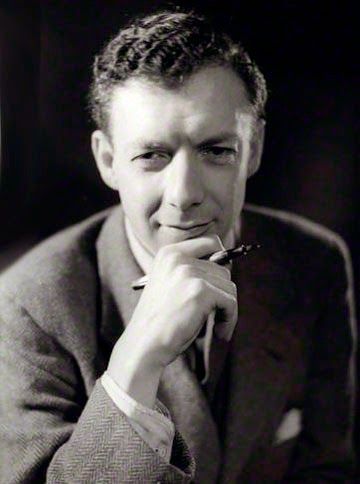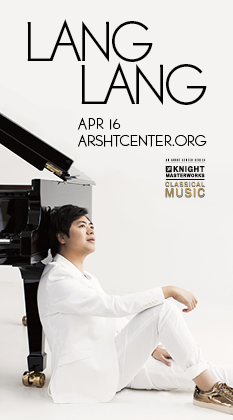Performances
New World musicians seize the solo spotlight in Concerto Showcase
The welcome return of the New World Symphony’s Concerto Showcase concert […]
Master Chorale eloquently illuminates a rarely heard Mozart masterpiece
Brett Karlin’s leadership of the Master Chorale of South Florida over […]
With Meade as a starry sub, Palm Beach Opera soars in season finale of “Norma”
Thanks to a last-minute casting change, one of the 21st century’s […]
Articles
Seraphic Fire conductor to explore music of 20 women composers, from Hildegard to Shaw
“We are used to hearing stories of women, the history of […]
Concert review
Orchestra Miami and friends inaugurate a new venue with engaging Britten
Benjamin Britten was one of England’s leading composers of the 20h century. On Sunday afternoon, Orchestra Miami and First Church Miami inaugurated their new Downtowner Concert Series with “A Britten Celebration.”
Located on the 9th floor of the new Elser Building, the sanctuary of First United Methodist Church of Miami is an imposing venue. With a clear, resonant acoustic and stunning views of the port of Miami and downtown, the space offers an inviting ambience for music making.
Artistic director Elaine Rinaldi assembled a program of four works from Britten’s early and middle compositional periods when he was at his creative zenith. Appropriately for a first performance at a new hall, the concert opened with Fanfare for St. Edmundsbury for three trumpets (1959). With two players in the balcony and one on a level with the audience, the antiphonal effects were vivid and immediate. A rhapsodic theme is followed by a march and, finally, a decisive fanfare with all three players producing overlapping threads with modernist harmonics. Brian Neal played with brilliance in the final attention-grabbing proclamation. Adam Bookspan and Pamela Smitter resounded with clarity from the upper level.
Britten wrote his Canticle II: Abraham and Isaac in 1952 for tenor Peter Pears (the composer’s partner and muse) and contralto Kathleen Ferrier, two of Great Britain’s most celebrated singers. Based on the Biblical story of God’s request to Abraham to sacrifice his son, this brief work is replete with austere vocal lines and allusions to elements of liturgical music. Although originally written for female voice, the role of Isaac is often sung by a countertenor. Victor Bento’s high, firmly placed voice and security in the top register made the son’s duty and anguish strongly felt.
At literally a few hours notice, Andres Lasaga took over the role of Abraham from the indisposed David Margulis. Lasaga, who fortunately knew the score, portrayed the prophet in powerful declamatory tones. As the voice of God, their duo timbres emerged well blended to ethereal effect.
Following God’s pardoning Abraham from committing the sacrifice, the father-son duet of thanks marked reconciliation and renewed faith. Even though the texts were projected, the two singers’ diction was admirably distinct. Rinaldi splendidly played the complex keyboard writing.
The Serenade for tenor, horn and strings, is one of Britten’s finest works, along with his major operas. A setting of six poems with a prologue and epilogue for solo horn, the work encompasses a life cycle in shifting moods from folk-infused lyricism to mournfully elegy. The work requires a tenor with a wide vocal range and strong dramatic instincts to give these finely chiseled vignettes.
Gerardo José Ortega was strong at the voice’s highest reaches and he communicated the varied texts with expressive feeling. Stanley Spinola’s horn melded with Ortega’s soaring tenor to lovely effect in “Pastoral.” In “Nocturne,” Ortega’s articulation of the repeated words “dying, dying, dying” in nuanced manner was grippingly theatrical. “Dirge” proved strangely moving, Ortega’s final soft phrases having potent finality.
“Hymn” recalls Britten’s folk song arrangements. Ortega and Spinola displayed rhythmic dexterity and accuracy. “Sonnet,” the final vocal movement in the cycle, is more directly melodious and Ortega spun the song with suppleness and refinement. In the solo opening and closing sections,
Spinola’s imposing horn sonority, controlled dynamics and agile command of the tricky leaps proved consistently impressive. He played the epilogue just outside the hall’s door, giving a feeling of distant fading away. Rinaldi conducted the 12-member string ensemble with appropriate attention to changes of mood and meter.
Charm is not a term one ordinarily associates with Britten. Yet his satirical opera Albert Herring is a delight and so is his early Simple Symphony, Op. 4. Based on themes he wrote as a teenager and finally collated into a full score in 1934, the work abounds in catchy tunes and graceful string invention.
Rinaldi took the initial “Boisterous Bourée” at a brisk clip and the “Playful Pizzicato” resounded with crisp precision. A “Sentimental Sarabande” is the score’s heart, abounding in noble, darkly tinted thematic patterns. Played with smoothness of string registration, individual parts were transparent. The “Frolicsome Finale” took on the aura of an unhinged dance, both lively and well played. The concert was a fine primer on the shorter works of an important composer of the last century.
Orchestra Miami presents “Viennese Soiree” featuring works by Mahler and Richard and Johann Strauss 7 p.m. May 4 at Sanctuary of the Arts in Coral Gables. orchestramiami.org
Posted in Performances
No Comments
Coming Up
April 16
Lang Lang, pianist
Faure: Pavane
Schumann: Kreisleriana
Chopin: […]
News
Seraphic Fire to present a season of diverse repertoire in 2024-25
Seraphic Fire will offer a wide-ranging series of concerts in the […]






